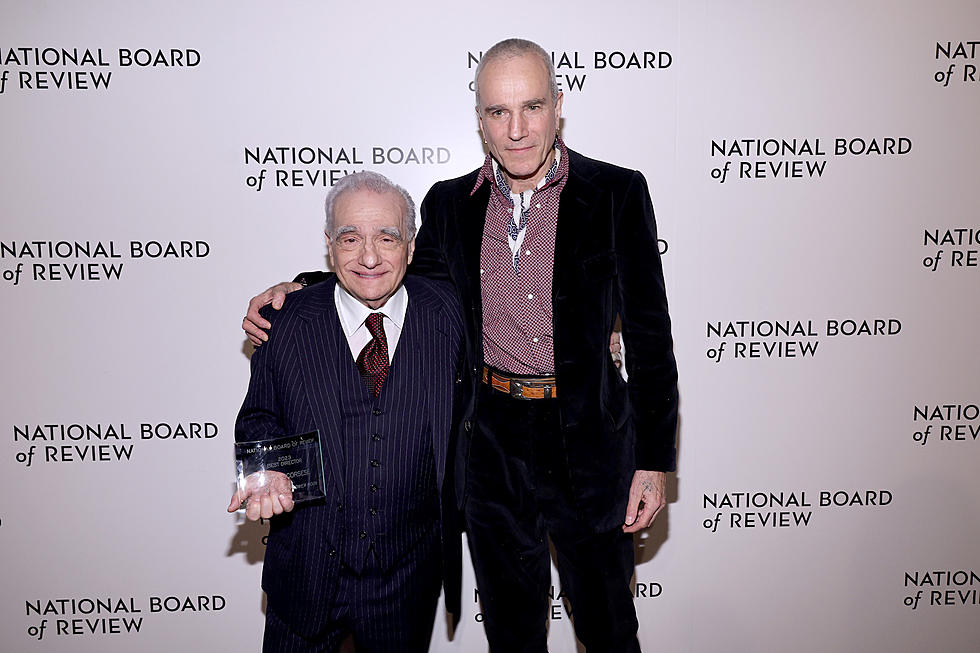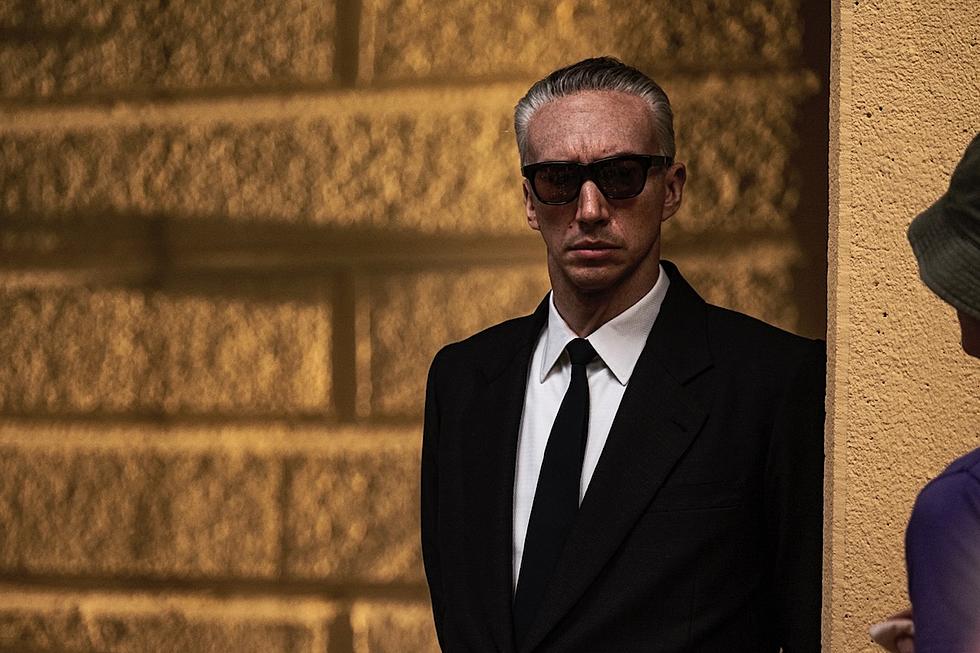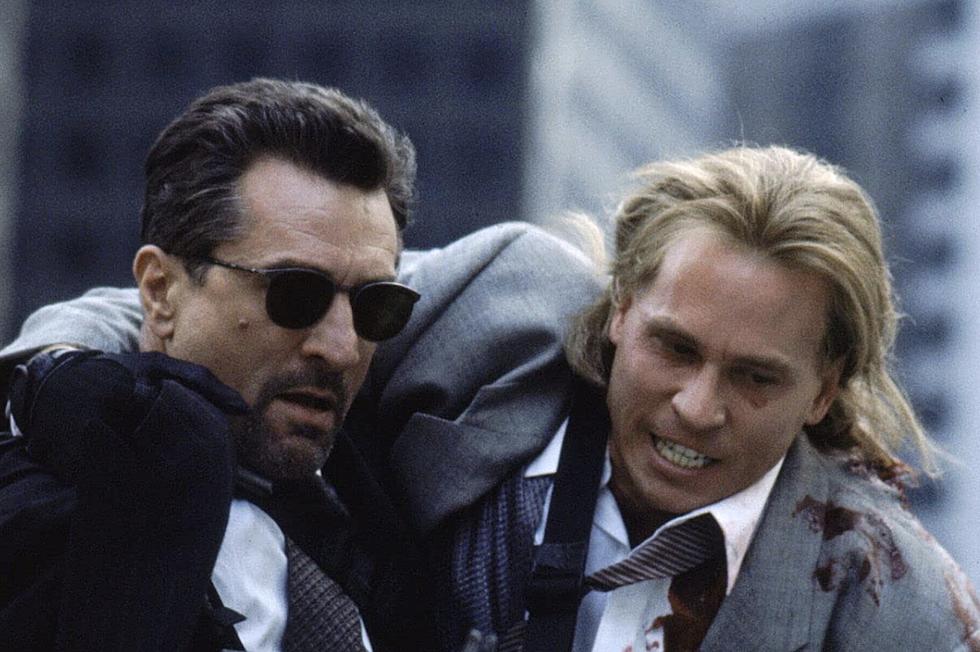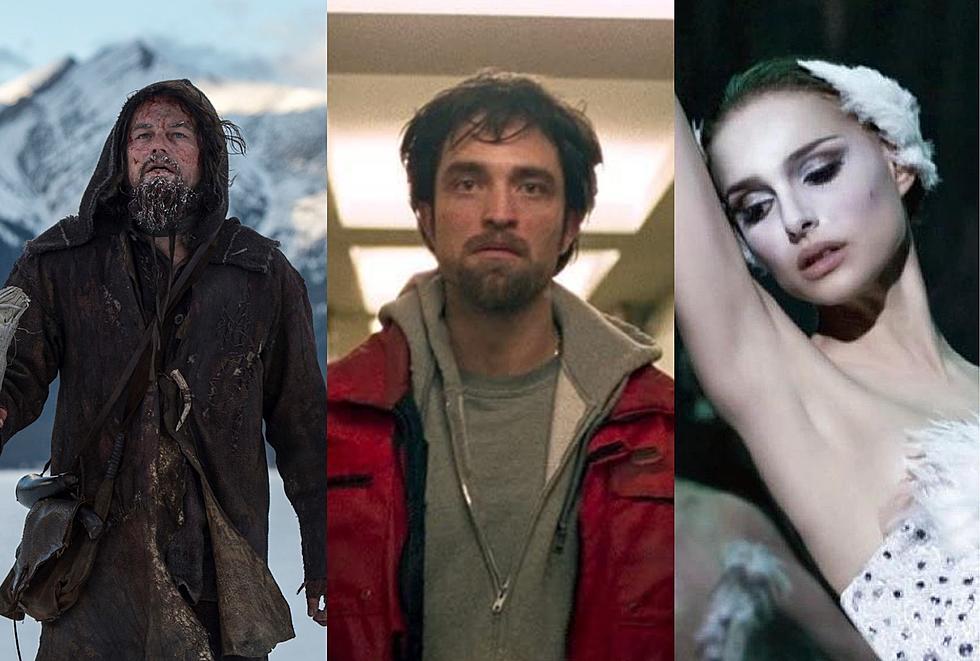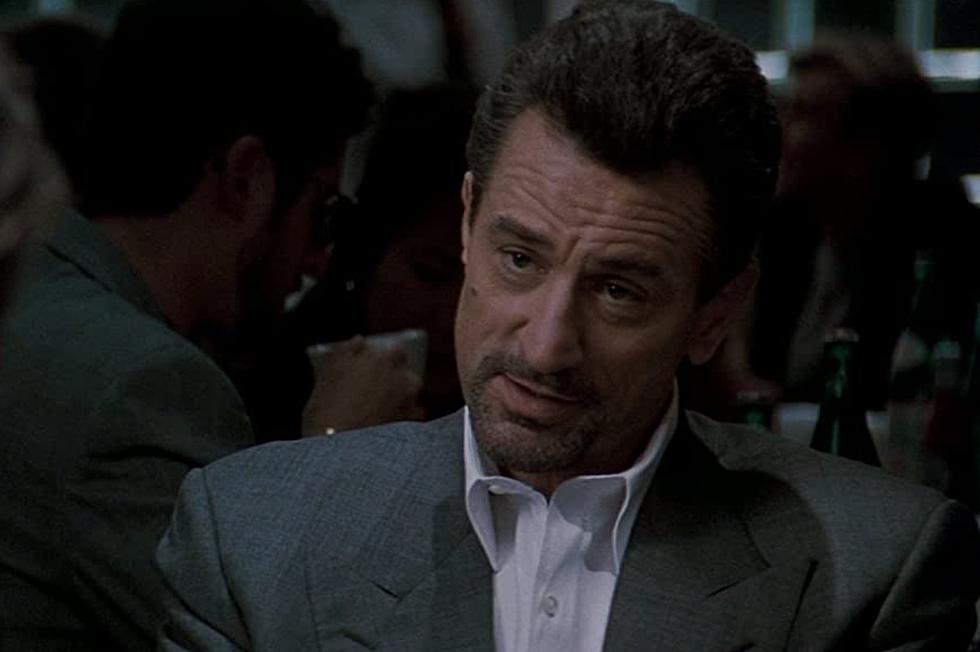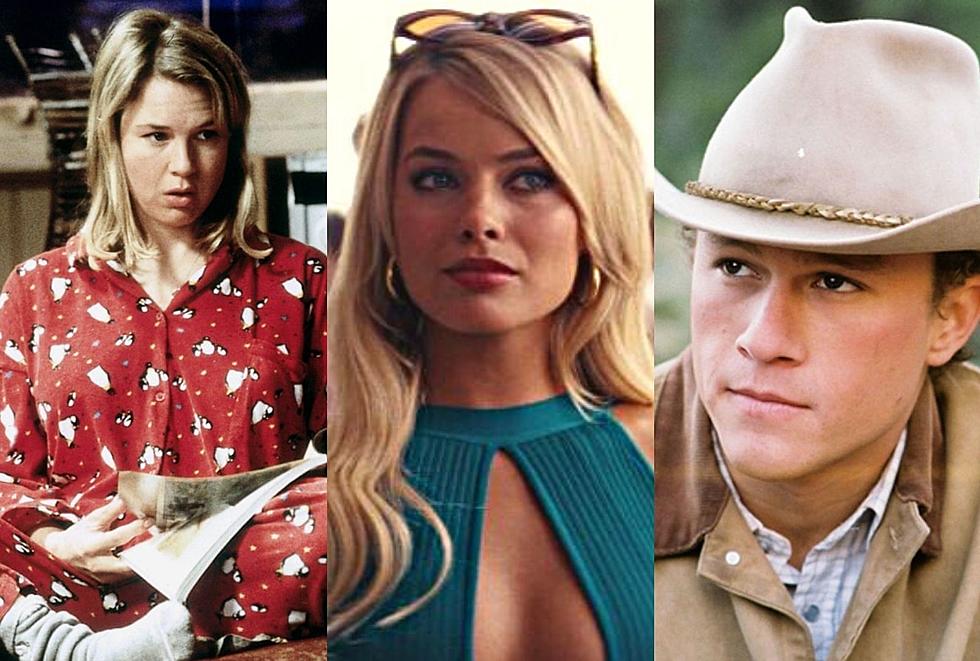
25 Years Later, ‘The Last of the Mohicans’ Score Makes It a Masterpiece
This week marks the 25th anniversary of Michael Mann's The Last of the Mohicans. Here we'll take a look at one of the film's most enduring legacies: its music, composed by Trevor Jones and Randy Edelman.
The sounds sneak up on you at first. The 20th Century Fox logo has barely faded to black before, almost imperceptibly, you begin to notice the rumbling of the drums. A distant melody grows under the opening title cards that give us our time and place. The sound builds and builds, in volume and intensity, for nearly 40 seconds until DAAAAAAAH-DA-DA-DAAAAAAH DA-DA-DA-DAAAAAAAHHHH. “The Last of the Mohicans” appears, yellow text over black, as this musical theme plays out, four measures of trumpets blaring, backed by a powerful string section and a thumping drumbeat.
The theme then repeats for another four measures, minus the trumpets — a slightly milder, though no less captivating, second trip. Onscreen we now get our first glimpse of the near-otherworldly Blue Ridge Mountains of western North Carolina (standing in here for 18th-century upstate New York), partially covered in a white haze that gives name to the Great Smoky Mountains National Park near where much of the film was shot.
And there you have it: the emergence of one of the most beloved and instantly recognized pieces of film music of the last few decades. Since the movie’s premiere in September 1992, the score from The Last of the Mohicans has popped up in numerous, wide-ranging areas of cultural life. It has been featured in Nike commercials, played in military tattoos, sampled by rappers, and used as entrance music by MMA fighters, to name a few. People love this score.
This gripping opening theme really deserves a better name than “Main Title,” but that’s what composer Trevor Jones called it. (Movie composers tend to be quite literal in their nomenclature.) When people say “that music from Last of the Mohicans,” this — DAAAAAAAH-DA-DA-DAAAAAAH DA-DA-DA-DAAAAAAAHHHH — is what they’re referring to. We’ll hear the “Main Title” theme many times throughout the movie, sometimes quite subtly, sometimes in the most spectacular, blood-stirring, stand-up-in-your-seat-and-scream fashion — but more on that later. What Trevor Jones and Randy Edelman, the second credited composer, created was a soundtrack so rich and rousing that it boosts the quality of the whole film. What might have otherwise been a finely textured period tale of war on the American frontier becomes, with Jones and Edelman’s contributions, a soaring epic romance that deserves a place among the best film adventures of the last 25 years.
With the conclusion of “Main Title,” the film dives right into the action. Daniel Day-Lewis, as our main character Hawkeye, dashes through the thick forest. As the visual switches from slow gazes at mountains to a desperate, heavy-breathing race through the woods, the score changes. It’s now an up-tempo collage of strings, sixteenth notes dancing atop longer-held tones that build the new theme – musically reflecting how Hawkeye and his companions, Uncas (Eric Schweig) and Chingachgook (Russell Means), gracefully glide, sprint and jump across the dense forest floor in pursuit of ... what exactly? The tension grows, both in our minds and in the music. Clearly the three men are tracking something, and whatever it is, it must be fast.
When Hawkeye stops running and raises his rifle, we finally see what they’ve been hunting: an elk. The giant, antlered beast appears in full stride bursting through the brush. As Hawkeye’s aim tightens, the ever-intensifying score reaches its apex, then stops. A split-second of silence and BLAM! Hawkeye’s weapon fires, killing the elk, which goes tumbling down the hillside. It’s our first moment without any music, and we’ve already learned so much about the world in which this movie exists, the people who populate it, its overall feel — and no one has spoken a word.
The “Elk Hunt,” as Trevor Jones once again so plainly titled his accompanying music, is the first of three such standout scenes that forego dialogue, relying instead on sound effects, the gorgeous cinematography of Dante Spinotti, impeccable period detail, exemplary acting, and, of course, the exhilarating musical accompaniment.
The Last of the Mohicans is a fairly straightforward war story. In 1757, during the French and Indian War, the three men we met in the opening — Hawkeye; his adopted Mohican father, Chingachgook; and Chingachgook’s son, Uncas — rescue the Munro sisters, Cora (Madeleine Stowe) and Alice (Jodhi May), and a British major, Duncan (Steven Waddington), from an ambush by a Huron war party that leaves the rest of the convoy dead. The attack is led by Magua (Wes Studi), a Huron masquerading as a Mohawk to gain British trust. As the Mohicans and Munros race across the lush forests and fields of New York state, Magua resumes his vengeful pursuit of the Munro women, as he blames their father, a colonel, for gravely harming his family.
The score to Last of the Mohicans was nominated for a Golden Globe and a BAFTA award, but not an Oscar. That it borrowed generously from a previously written piece of music — we’ll get into that shortly — may have prevented Academy consideration. (Alan Menken won that year for Aladdin.) The film did take home the Academy Award for Best Sound — a deserving win, but also a fun bit of trivia now, considering how esteemed the soundtrack has become.
And that soundtrack almost never happened. At least, it wasn’t meant to happen the way that it did. Director Michael Mann’s original cut of the film was about three hours, far longer than the studio wanted. So its summer release date was pushed back to the fall, giving time for Mann to re-edit the film. When he had finished the 112-minute cut that made it to theaters, the first composer, Trevor Jones, was unavailable to readjust his original work to the newer, shorter version. So Mann hired Randy Edelman, who added his own touches with a very different feel.
Jones’ compositions may be the more familiar, but Edelman offers valuable connective tissue. His pieces are softer and slower, a velvet glove to Jones’ iron fist. (That the film now had two credited composers may have been another reason the Academy did not consider it.) It seems strange now, but Mann originally wanted an electronic score, rather than an orchestral one. It’s hard to imagine the movie that way, but if you take a listen to the next bit of music we’ll be examining, maybe you can understand what Mann was thinking (if it was Mann’s idea, not Jones’, that is).
Along with “Main Title,” the other piece of iconic Last of the Mohicans music first arises 55 minutes in, just about the midpoint of the film, during the battle of Fort William Henry. Called “The Kiss,” the tune is inspired by Scottish folk singer Dougie MacLean’s “The Gael” (you can hear the possible electronic influence at the beginning). Jones reworked the fiddle-based refrain into a romantic jewel.
At this point in the story, Hawkeye has led Cora and Alice to the fort where their father is in command. The British stronghold is under heavy assault by the oncoming French army, digging ever closer as their cannons pound the fort’s outer walls with ear-splitting power. In the medical wing, Cora has been tending to the wounded, of which there are many. When one of her patients dies, Cora looks around and sees nothing but more misery.
Outside, Hawkeye knows he may be locked up or worse for having helped his friends sneak out of the fort, but he stays behind anyway — he must find her. While searching, he passes by a few soldiers and women dancing as we hear a solitary violin strike up “The Gael.” Perhaps some lone, unseen fiddler is playing it. And perhaps Cora hears it. Amid the more immediate sounds of coughing and pain, she decides it’s time to leave the hospital area. Soon after, she finds Hawkeye.
They meet, and he whisks her off to a secluded area. They kiss, they caress, they cling, but mostly they escape the hell that is a fort under siege. As the sounds of Hawkeye and Cora’s kissing and breathing pick up, “The Gael” is joined by another violin, this one playing a variation of “Main Title” — not the full-blown, hair-raising rendition we heard at the beginning, but a sadder, elegiac version befitting the moment. These are two vulnerable people surrounded by death and destruction, but can’t help what’s happening between them.
There’s no nudity or thrusting hips. What we see and feel, and above all hear, is passion. In one of the sexiest sex scenes ever, we never see any sex. The chemistry between Day-Lewis and Stowe throughout the movie sizzles, but it’s the music that truly warms the viewer’s blood and enables the outpouring of emotion. And this, like the “Elk Hunt,” all occurs without any character uttering a word.
The Last of the Mohicans’ intense devotion to historical accuracy and attention to period detail is part of Hollywood lore now. For the Fort William Henry scene, Mann and his production team nearly rebuilt the whole thing, based off an 18th-century floor plan. Mann sent his extras to military boot camp prior to shooting. Day-Lewis, well known for his intense preparations for a role, spent significant time in the wilderness, often alone, catching his own food and living off the land as Hawkeye would.
The realistic way the movie treats firearms is also of note. Rifles in that day fired only one shot at a time, and reloading was an extended process. Every time one is used in Last of the Mohicans, it is either painstakingly reloaded or set aside in favor of an already-loaded replacement (often belonging to whoever fell victim to the first one). The gunshots release enormous plumes of smoke, enough that, for example, Magua is able to escape before Hawkeye can see through the cloud of his missed shot when they first meet at the Huron ambush.
The clearest example of firearm discarding-and-replacement comes in the climactic chase up the mountain, as Hawkeye, Uncas, Chingachgook and Cora race after Magua and the Hurons, fleeing to the west with Alice as prisoner. Once again, this sequence — nearly eight minutes long — leaves the spoken word behind (except for one crying wail of “Uncas!”), using the momentum of the action and the pulsing music to propel the scene forward. Called "Promontory," this segment brings us the first union of the two main themes of The Last of the Mohicans, “Main Title” and “The Gael.”
As Uncas sprints up the rocks, “The Gael” plays over and over again, its driving drumbeat and pulsing violin mirroring the Mohican’s footsteps and heartbeat. At about 2:51 in the above video, we finally hear “Main Title” together with “The Gael,” and the sound of their marriage is as majestic as the wide shot of the Blue Ridge Mountains.
Many of the scene’s cuts are precisely timed to occur in unison with the beats of “The Gael,” such as when Uncas appears around the corner of a rock face and bashes the butt of his rifle into an unsuspecting Huron’s face, or the first arrival of a rolling timpani when Chingachgook emerges after Uncas’s death at Magua’s hands (7:23). These new drums could represent the change inside Chingachgook, as his mission turns from one of rescue to one of vengeance.
At the final showdown between Chingachgook and Magua, “Main Title” returns and “The Gael” crests right as Chingachgook inflicts multiple devastating shots to his enemy atop the aforementioned promontory. As his war club delivers the final death blow, the rolling timpani resurfaces at the moment of impact. Magua is dead. And the music comes to an end.
Hawkeye may have been our main character, but he is not the title character, as we learn in the following mournful prayer from Chingachgook:
Great Spirit, Maker of All Life, a warrior goes to you swift and straight as an arrow shot into the sun. Welcome him and let him take his place at the council fire of my people. He is Uncas, my son. Tell them to be patient and ask death for speed, for they are all there but one — I, Chingachgook, last of the Mohicans.
The film concludes with Hawkeye, Cora, and Chingachgook staring out at the landscape as “Main Title” plays. The credits roll over the same slow pan across the haze-covered Blue Ridge Mountains we saw at the very start. The blaring trumpets from the first section of “Main Title,” which we last heard as the title of the movie appeared onscreen, return as well, this time bringing the story to its end.
With a merely good musical score, or even an average-at-best one, The Last of the Mohicans would still have been a fine picture, if a bit melodramatic at times. Its stunning photography, breathtaking scenery, intricate costume design, heart-pumping action sequences, stellar performances, and meticulous re-creation of 18th-century warfare would likely combine for a thrilling cinematic experience regardless of the music's quality. But what lifts the film above that and into classic status is the score, powerful and evocative enough to render dialogue wholly unnecessary for three crucial scenes.
Trevor Jones and Randy Edelman’s work takes what was already very good and elevates it to a searing romantic wartime adventure of the highest entertainment. And it all starts with a faint rumbling of the drums.
More From ScreenCrush
